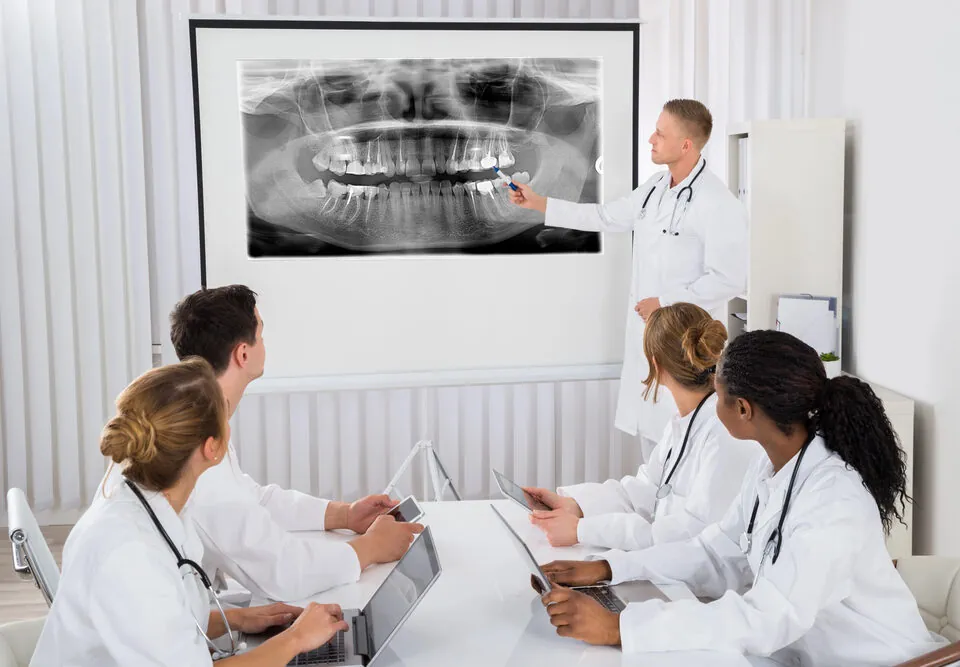Dental X-rays are a critical diagnostic tool in modern dentistry, helping professionals detect issues that aren’t visible to the naked eye. But not all X-rays are created equal. While both intraoral and extraoral X-rays serve the same overarching purpose – helping dentists visualize teeth, bones, and tissues – they differ significantly in technique, purpose, and scope. Let’s break down the differences to help you better understand which imaging type suits which clinical need.
What Are Intraoral X-Rays?
Intraoral X-rays are taken from inside the mouth. These are the most common type of dental X-rays and provide high detail of individual teeth, supporting bone, and surrounding tissues. Common types include bitewings, periapical, and occlusal X-rays.
These X-rays are particularly useful for:
- Detecting cavities
- Evaluating root canals
- Checking bone levels around teeth
- Assessing tooth development
Dentists rely on intraoral X-rays for the early detection of cavities, root infections, and bone loss. The clarity and accuracy of these images make them indispensable in routine checkups and advanced diagnostics.
Digital sensors like the DentiMax Dream Sensor and Open Sensor are designed specifically for intraoral imaging. These advanced sensors provide high-resolution images instantly and are built for patient comfort, durability, and precision.
What Are Extraoral X-Rays?
Extraoral X-rays are taken from outside the mouth and are typically used to capture a broader view of the entire jaw, skull, or facial structure. Common types include panoramic X-rays, cephalometric projections, and cone-beam computed tomography (CBCT).
These are ideal for:
- Assessing jaw and facial bone development
- Evaluating impacted teeth (like wisdom teeth)
- Planning orthodontic treatments
- Diagnosing TMJ disorders or cysts
While extraoral X-rays lack the fine detail of intraoral ones for individual teeth, they are vital for viewing large areas. Their panoramic perspective is invaluable for comprehensive treatment planning.
Why Imaging Quality Matters
In every dental practice, the quality of imaging—both intraoral and extraoral—is a cornerstone of effective diagnostics and treatment planning. Yet, many clinics either do not utilize extraoral imaging at all or settle for subpar intraoral imaging systems that fall short of clinical needs.
Technically, the key distinction between the two is this: for intraoral X-rays, the sensor is exposed inside the patient’s mouth, while for extraoral X-rays, the sensor is exposed outside the mouth. This basic difference has major implications on image detail, scope, and application.
Relying on low-quality imaging compromises your ability to detect early signs of decay, infection, or abnormalities—and ultimately, patient outcomes. Investing in advanced imaging tools like the Dream Sensor or Open Sensor ensures not only precision but also consistency and confidence in every diagnosis.
Safety & Efficiency with Digital Sensors
Whether intraoral or extraoral, digital X-ray systems are significantly safer than traditional film. They expose patients to much lower radiation and provide instant results, improving diagnosis speed and accuracy. Learn more about the benefits of modern imaging technology here.
Which Should You Use—and When?
Choosing between intraoral and extraoral X-rays depends on the clinical scenario. Intraoral X-rays are ideal for inspecting tooth-level issues, such as cavities, infections, or minor fractures. Extraoral X-rays, on the other hand, are best suited for orthodontics, complex extractions, and assessing trauma.
Modern dental practices often utilize both for a comprehensive view of a patient’s oral health. Digital X-ray systems, like the DentiMax Dream Sensor, offer stunning clarity for intraoral diagnostics, while solutions like cone beam imaging bring extraoral capabilities into sharper focus.
If you’re looking for a cost-effective and versatile option for intraoral imaging, the DentiMax Open Sensor combines affordability with outstanding image quality.
The Best of Both Worlds
Both intraoral and extraoral X-rays are indispensable in delivering high-quality dental care. While each serves a different function, together they provide the full picture dentists need to diagnose, plan, and treat with precision. By upgrading to advanced digital sensors, your practice can minimize radiation exposure and maximize diagnostic clarity.
Ready to elevate your imaging workflow? Discover the power of DentiMax dental sensors and see the difference in your diagnostics and patient experience.






